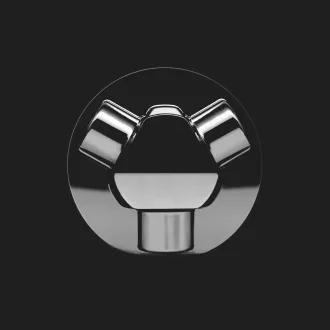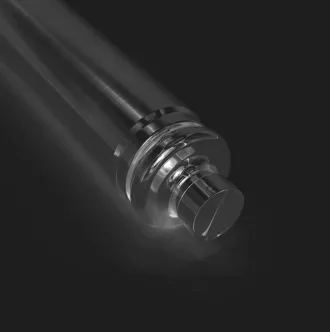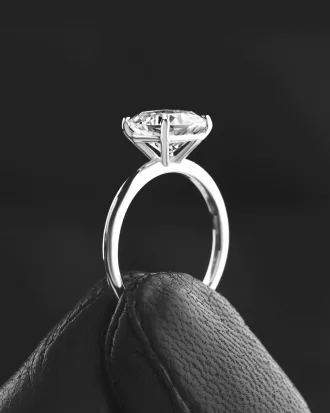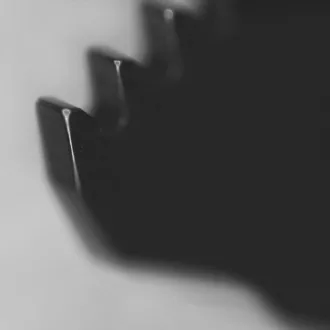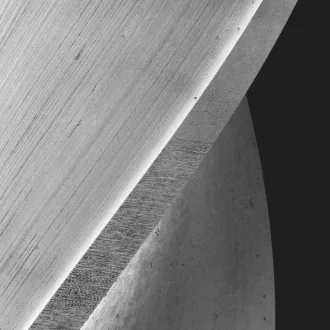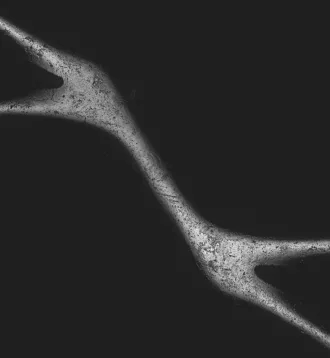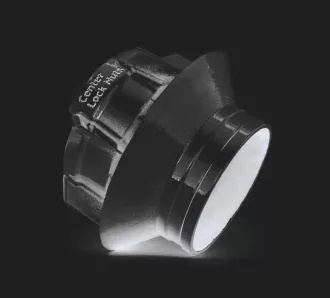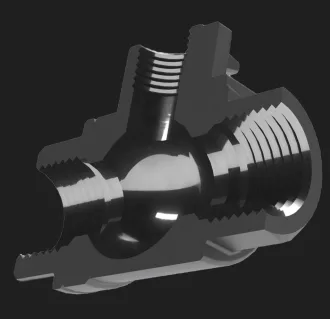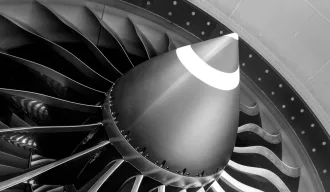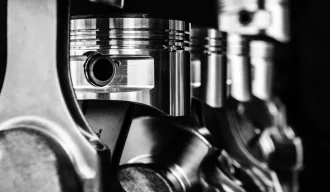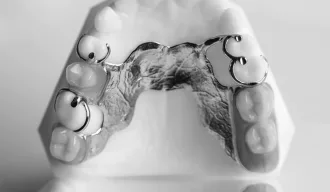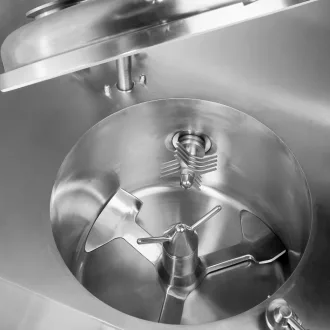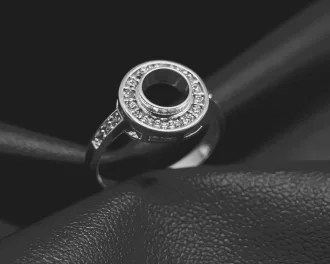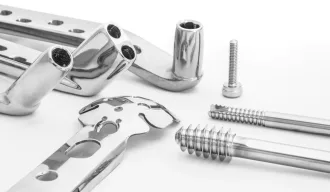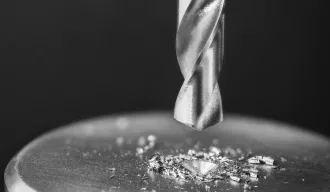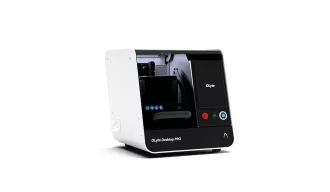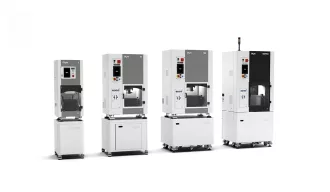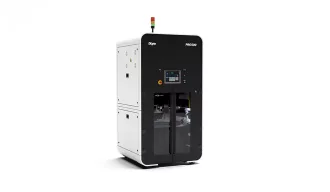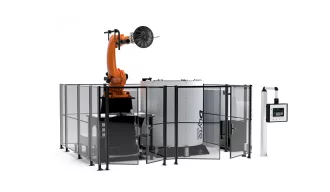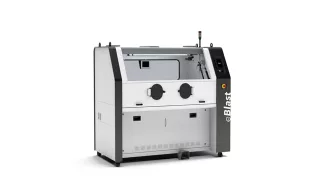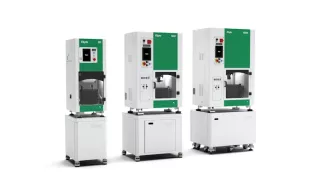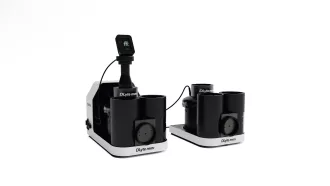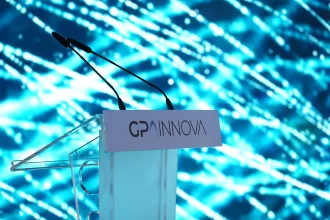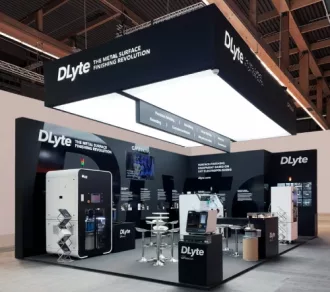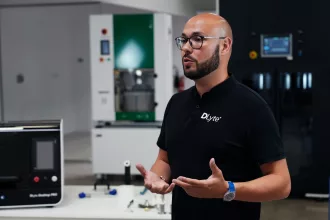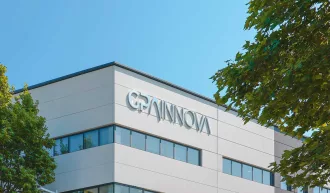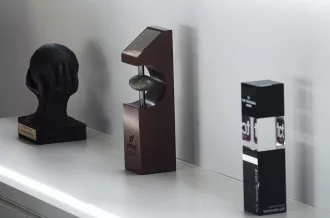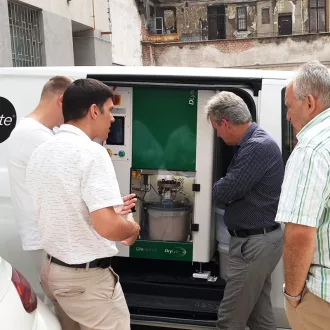GPAINNOVA’s client is a company specializing in designing and manufacturing high-quality carbide inserts.
THE PROBLEM
Polishing carbide insert dies is a resource-intensive activity, relying on manual polishing that takes hours and often yields unsatisfactory results. Before contacting GPAINNOVA, the customer did not have an alternative process to automatically polish carbide dies. Skilled polishers typically spent around 8 hours per piece, with an approximate cost of €300.
The client’s former mechanical surface finishing processes were ineffective in polishing tungsten carbide due to its hardness, leading to uncontrolled rounding of edges. Chemical and electrochemical processes caused corrosion, releasing cobalt in a reaction known as leaching, resulting in the loss of the binder metal and structural collapse while in service. The black areas in the picture below represent spaces where the cobalt binder has been removed due to corrosion during the surface finishing process.
The company considered that automating the surface finishing of carbide insert dies could improve repeatability, quality, and reduce production costs. As reported, the customer used manual polishing, spending an average of 8 hours per piece.

THE GOAL
The customer was seeking ways to improve production capacity, enhance quality, and reduce the cost of polishing carbide insert dies. The customer aimed to achieve higher quality and longer tool lifecycles through surface finishing.
The target for the surface finishing process was to achieve a mirror surface finish with a significant reduction in roughness and increased brightness, reaching an Ra goal below 0.01 microns (0.4 microinches) without impacting the edges.
THE SOLUTION
GPAINNOVA achieved the desired technical specifications for the surface, which included high-gloss polishing of the insert die to reduce surface roughness, all while maintaining the original radius. To preserve the part’s integrity, it is immersed in the electrolyte with a protective cover to safeguard the edges. An additional advantage of the DryLyte technology is that if the artwork on the piece must remain unchanged, a mechanical masking can be easily applied and removed after the process is completed.
However, the primary benefit lies in cost and time reduction. The previous manual polishing process, which required approximately 8 hours per cycle, has been successfully replaced by the DLyte process, completing the task in just 92 minutes.
Are you interested in learning about the production increase, the comparison of previous and current costs per piece, or how DLyte can boost your business? Download now our free case study!

TECHNICAL BENEFITS
01. Without leaching effect
02. Geometry and tolerance preservation & homogeneous results across the piece
03. Best-in-class concerning surface roughness (Ra under 0.01 micrometers)
04. Stable results among different batches within the electrolyte lifespan
05. Longer lifespan for treated parts
OPERATIONAL BENEFITS
01. Reduced footprint
02. Time and cost reduction
03. Exposure of workers during process and maintenance
04. Handling and storage of media
05. No need for multistep processes
06. Easy waste management
